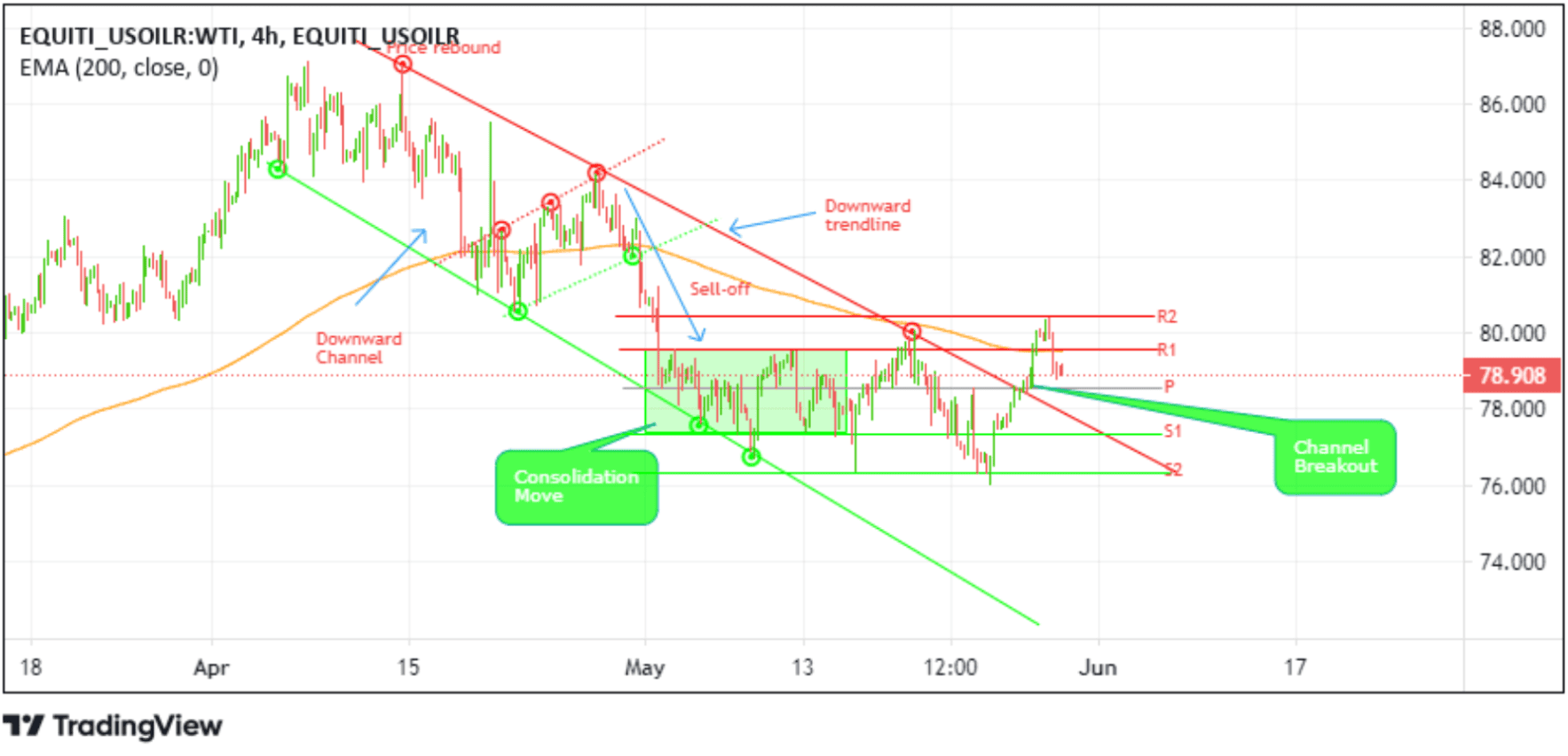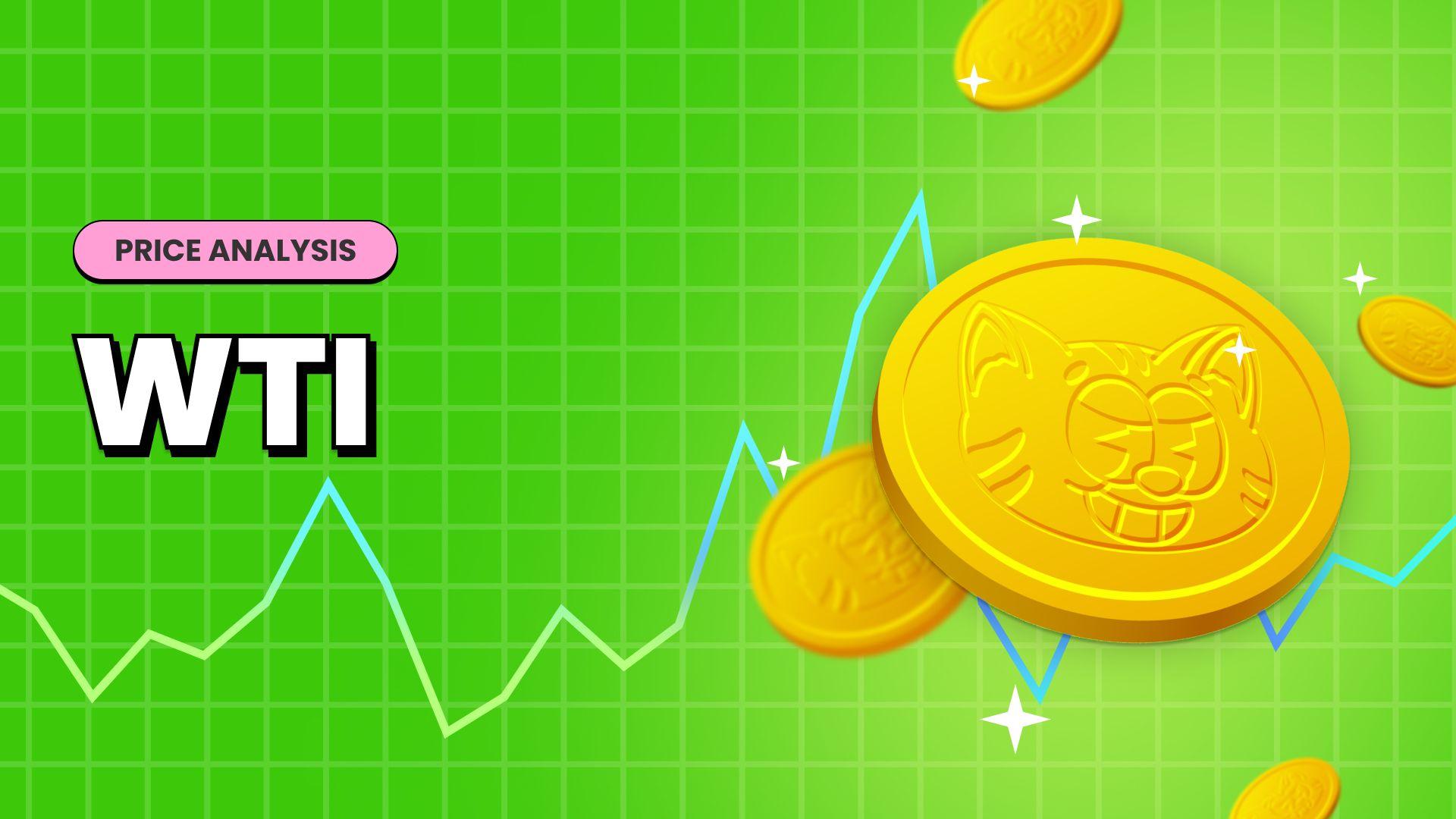US WTI Crude Oil Price Retreats Further On Stronger U.S. Dollar, U.S. Q1 GDP Report Eyed






Key Takeaways:
- US WTI crude oil price drops for the second consecutive day, weighed by a stronger U.S. dollar
- Optimism over a larger-than-expected draw in U.S. inventories gets offset by caution ahead of U.S. quarter one GDP data report released
- A stronger U.S. dollar across the board, supported by hawkish Fed expectations, weighs on crude oil prices
- Investors' focus shifted toward the release of the quarter one U.S. Gross Domestic Product (GDP) data report, which is expected to show the U.S. economy continues to be resilient
The U.S. West Texas Intermediate (WTI) futures crude oil price inched lower on Thursday during the Asian session, extending losses for the fourth straight session and the second consecutive day as optimism over a larger-than-expected draw in U.S. inventories was offset by caution ahead of key monetary policy indicator that is likely to influence the path of the Fed rate trajectory.
U.S. West Texas Intermediate (WTI) futures fell around 9 cents/0.12% to trade at $79.17 per barrel. The current oil price move helps drag crude oil prices further away from a four-week high or $80.60 level touched on Wednesday and further reverses part of this week's earlier gains following a heavy rally supported by a weaker U.S. dollar weighed by concerns of Fed rate cuts in 2024. Nevertheless, the precious black liquid will likely finish the week with modest gains.

U.S. Crude Oil Inventories See Significant Drop
According to the API's Weekly Statistical Bulletin, U.S. crude oil inventories dropped by 6.49 million barrels for the week ending May 24, 2024, following a 2.48 million barrel rise in the previous week. This was the biggest weekly draw in crude oil inventories since the last week of December due to a jump in demand ahead of the Memorial holiday, beating the anticipated 1.9 million barrel decline.
Modest U.S. Dollar Strength
The U.S. dollar index, which measures the greenback against a basket of currencies, recovered part of its earlier this week lost ground and moved above the $105.100 mark on Thursday during the Asian session. This marked a third day of positive moves in the last four as increased bets that the Fed will stick to higher rates for longer lifted sentiment further around the greenback. This was a critical factor that weighed on crude oil prices.
This comes after the minutes of the Fed's last policy meeting held between April 30 and May 1, released on Wednesday, revealed Fed officials grew more concerned over stubborn inflation. The minutes further showed "various participants" willingness to hike rates if inflation didn't keep moving lower toward the Fed's 2% goal, denting sentiment around interest rate cuts. The odds for rate cuts in September and November have now eased significantly to around 40% and 56.1%, respectively, from 60% and 72.5% earlier this month.
The meeting minutes come after a series of Fed officials urged patience regarding rate cuts this week as inflation remains above the Fed's 2% target.
Notably, Atlanta Fed President Raphael Bostic last week said that it will take time before the central bank is confident that inflation will return to 2%, reiterating that only one rate cut will be necessary this year. He added, "Our new steady state is likely to be higher than what people have known over the last decade, maybe back to where we were in the 1990s and 2000s."
Minneapolis Federal Reserve President Neel Kashkari told CNBC on Tuesday that it would require "many more months of positive inflation data" to convince him that the Fed should cut rates once or twice this year.
That said, investors' focus today is squarely on the quarter one U.S. Gross Domestic Product (GDP) data report, which is expected to show that the U.S. economy continues to be resilient.
It's worth noting that while economic strength offers some positive cues on oil demand, it also gives the Federal Reserve more headroom to keep rates high for longer — a trend that is expected to eventually eat into demand.
Of greater importance to markets is also the Core Personal Consumption Expenditure (PCE) data report, popularly known as the Fed's preferred inflation gauge, which is expected to be released on Friday. As one of the key monetary policy indicators, tomorrow's outcome will likely influence the longer-term outlook on the Fed's rate outlook.
Beyond the Fed and interest rates, oil markets were also awaiting a meeting of the Organization of Petroleum Exporting Countries and Allies (OPEC+), which is set to take place virtually on June 2. The cartel is widely expected to maintain its current pace of production cuts past an end-June deadline.
Technical Outlook: Four-Hour US WTI Crude Oil Price Chart

From a technical perspective, the price's ability to extend the modest bounce from the vicinity of $80.433 (R2) level followed by a subsequent move below the $80.000 round mark and the $79.562 level (R1) which coincides with coincides with the technically strong 200-day (yellow) Exponential Moving Average (EMA), favours sellers and supports the case for further downside moves around the crude oil prices. A further increase in selling pressure will pave the way for a drop toward the 78.554 pivot level (P), about which, if the price finds acceptance below this level, downside pressure could gain further momentum, paving the way for a decline toward the upper-most downward trendline extending from the mid-April 2024 swing higher-highs. A subsequent break below this key resistance level, which has now turned to the support level, would act as a fresh trigger for new sellers to jump in, paving the way for an accelerated drop toward the 77.361 level (S1). A decisive move below this level will pave the way for a decline toward the $76.345 support level (S2) if this level fails to hold. The price manages to sweep liquidity below the $76.054 level; the precious black liquid price would turn vulnerable for a drop toward the $ 75.000 and $ 74.000, and in extreme bearish cases, the black liquid would drop further to retest the downward trendline, extending from the early-April 2024 swing lower-lows.
On the flip side, the $79.562 level (R1) now protects crude oil prices' immediate upside. A convincing move above this level would reaffirm the bullish bias and pave the way for a rise toward the $80.433 level (R2). If the price pierces this barrier, buying interest could gain further momentum, paving the way for more gains around US WTI crude oil prices.

